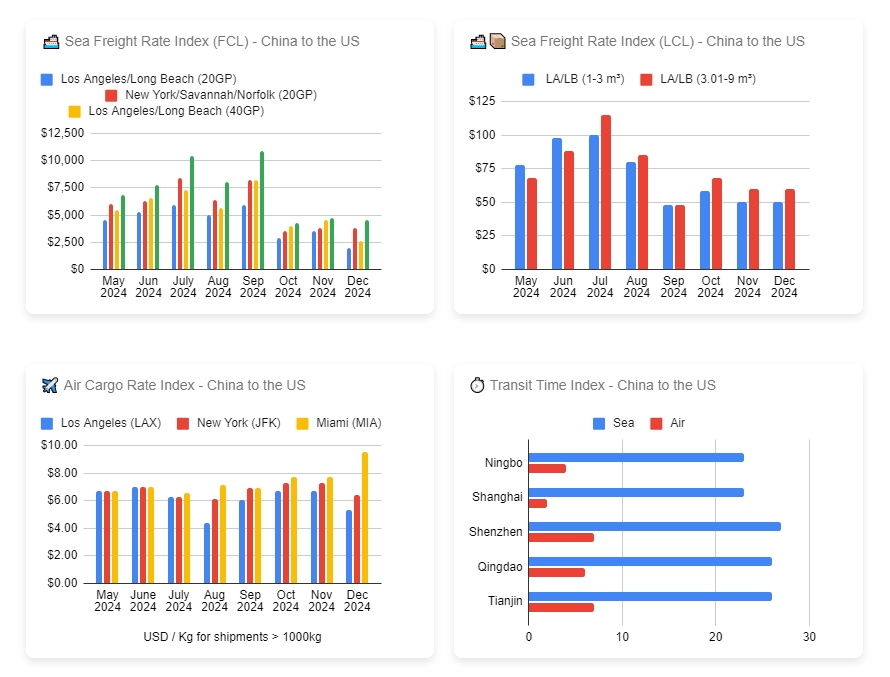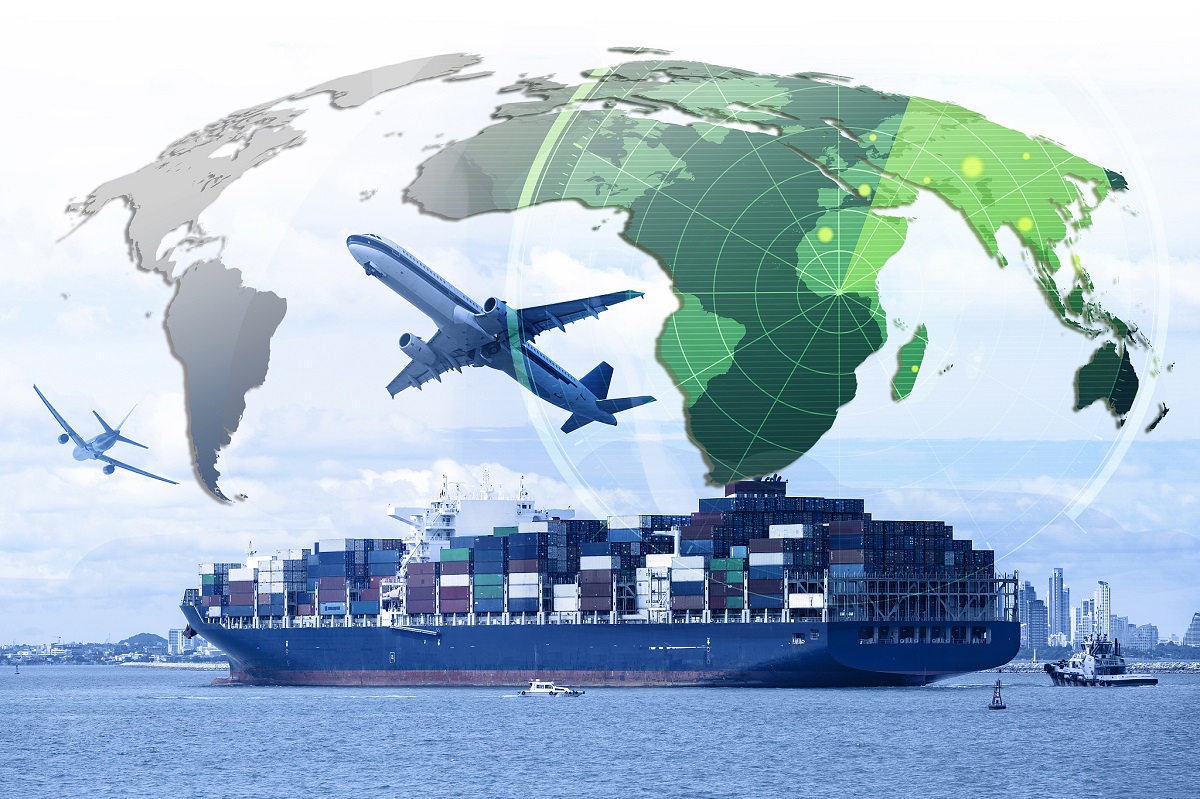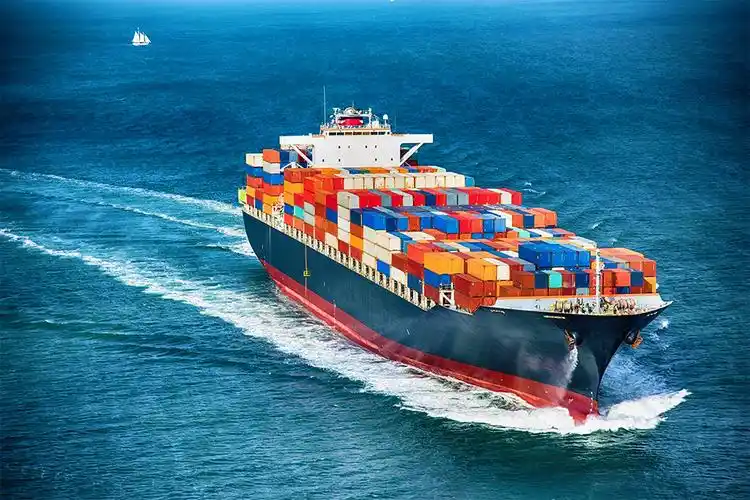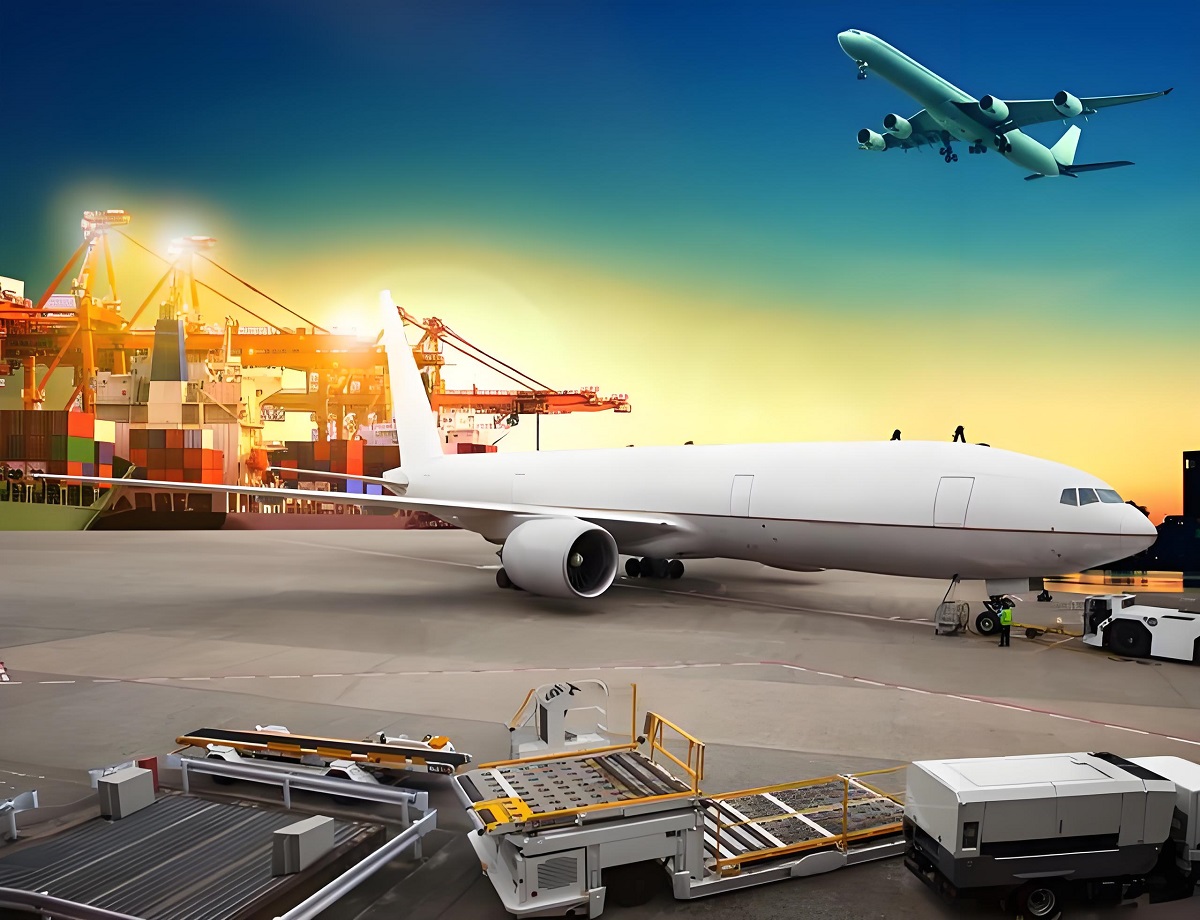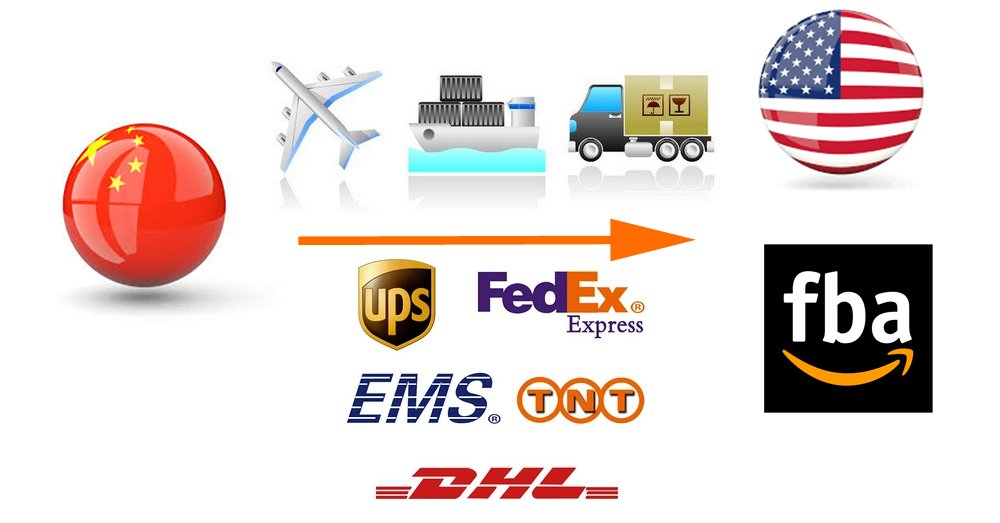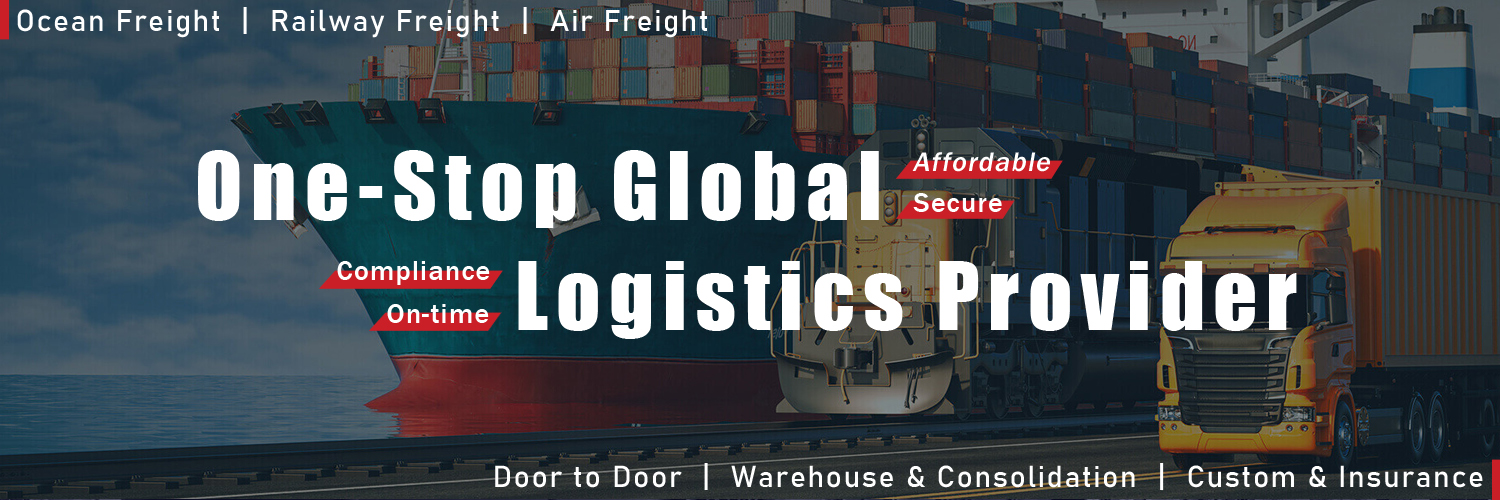Shipping from China to US | Sea & Air Freight Rates
Why is the trade relationship between China and the United States so important? These powerful economic connections not only drive growth and innovation between the two countries, but also shape the global business landscape. In this era of global trade, logistics companies like Presou Logistics have further simplified international shipping routes, enabling businesses of all sizes to easily enter the global market. This dynamic interaction highlights the crucial role of China US relations and cross-border trade in driving the future of the global economy.
December 2024 Shipping Update: From China to the USA
Shipping expenses from China to the USA fluctuate based on the mode of transportation chosen. As of December 2024, the cost of air freight for consignments exceeding 1000 kilograms spanned from $5.30 to $9.50 per kilogram, offering a transit duration of 2 to 7 days. In contrast, sea freight expenses for a 20-foot container ranged between $2,000 and $3,800, while a 40-foot container cost between $2,600 and $4,500, with a shipping time of 23 to 30 days. For less than container load (LCL) shipments, rates were between $50 and $85 per cubic meter, contingent on the shipment's volume and final destination.
Delivery Times: Delivery times are influenced by customs and port efficiency in the USA. Air freight typically takes 4-5 days. Sea freight requires 20-30 days, with potential delays due to port congestion.
Customs: Accurate documentation is essential to avoid delays in U.S. customs. Precise paperwork is required for efficient processing, particularly during the holiday season.
Global Events Impacting the USA: Geopolitical issues, such as disruptions in the Suez Canal or European ports, could impact shipping routes to the USA, leading to delays and increased costs.
Outlook for December 2024: Shipping rates may slightly decrease post-peak season; however, holiday demand and weather-related disruptions could still pose challenges. Strategic planning and early booking remain critical.
Summary for U.S. Shippers: Stay informed about current shipping rates and potential delays. Effective planning, timely documentation, and flexibility in logistics operations are key to ensuring smooth shipping from China to the USA.
Freight Shipping Cost from China to the USA for December 2024
Overview of Costs by Shipping Mode
| Shipping Mode | Cost Range | Suitability |
|---|---|---|
| LCL (Less than Container Load) | $50 to $85 per cubic meter | Cost-effective for volumes that don’t require a full container |
| FCL (20-foot container) | $2,000 to $3,800 | Economical for larger shipments |
| FCL (40-foot container) | $2,600 to $4,500 | Economical for larger shipments |
| Express Shipping | Varies widely (hundreds to several thousand dollars) | Most expensive option, offers speed and convenience |
| Air Freight | $5.30 to $9.50 per kilogram | Middle ground between speed and cost for urgent shipments |
Estimating Shipping Costs and Effective Budgeting
To accurately estimate shipping costs from China to USA, incorporate all potential expenses:
- Foundation Freight Rate: This is the initial rate for shipping, which is subject to change as detailed previously.
- Fuel Surcharge: Additional costs that can substantially increase the overall expense, these surcharges typically rise and fall in line with worldwide oil price movements.
- Customs Duties and Taxes: The charges for these can range from 5% up to 40% or higher of the total cost, depending on the category of the goods, as well as their type and value.
- Additional Fees: These encompass a variety of expenses such as port charges, documentation fees, and insurance costs, among others.
Understanding Import Tax and Duties
Impact of Import Taxes on Overall Shipping Costs
In the United States, import taxes and duties are calculated based on the Harmonized System (HS) code of the product and its Customs Value, which is calculated by adding the cost of the goods, insurance, and freight (CIF). The customs duty rates differ across product categories, with electronic items typically incurring duties of 2-6%, whereas luxury goods can be subject to rates exceeding 20%. These charges have a direct impact on the overall shipping expenses from China to the USA, which is a critical factor for importers to consider when budgeting for their imports.
Example Table of Products and Estimated Customs Duties
| HS Code | Product Category | Estimated Customs Duty |
|---|---|---|
| 8504 | Electrical Transformers | 2.5% |
| 6204 | Women’s Suits | 16.5% |
| 8471 | Computers and Components | 0% |
| 9503 | Toys | 0-12% |
| 8703 | Passenger Vehicles | 2.5% |
| 4202 | Handbags | 5-20% |
| 8528 | Televisions | 0-5% |
Navigating Legal Compliance in International Shipping
Adhering to U.S. import regulations necessitates precise classification of merchandise according to the Harmonized System (HS), correct valuation of the goods, and thorough documentation. Misclassification of HS codes may result in erroneous duty payments and could incur legal sanctions. The declared customs value should truthfully represent the transaction value, including any additional expenses. Key documents required for customs clearance are the commercial invoice, packing list, and certificate of origin. Leveraging guidance from the U.S. Customs and Border Protection (CBP) or seeking advice from seasoned customs brokers is crucial for maintaining compliance, which helps to avoid potential holdups and financial penalties.
Shipping from China to USA Transit Time
Comparison of Transit Times Across Shipping Modes
The time it takes to ship goods from China to the USA can range widely depending on the chosen mode of transportation. Businesses can select the most suitable shipping method by considering factors such as cost, speed, and the nature of the goods being shipped. Here’s a concise guide to transit times for various shipping options:
| Shipping Mode | Transit Time | Suitability |
|---|---|---|
| Sea Freight (LCL and FCL) | 23 to 30 days | Cost-effective for large shipments |
| Air Freight | 2 to 7 days | Balance between cost and speed for high-value or time-sensitive goods |
| Express Shipping | 1 to 3 days | Quickest but most expensive option |
The appropriate choice of shipping method is influenced by the time-sensitivity of the cargo, the type of products being shipped, and financial limitations. For instance, when electronics companies are unveiling new models, they might choose air shipping to ensure they hit their product launch targets. Conversely, businesses dealing in furniture might select ocean shipping as a cost-effective solution.
Factors Affecting Transit Times and Mitigation Strategies
What factors influence the transit time of shipments from China to the USA, and how can businesses minimize delays? Several variables can extend shipping times:
- Weather Conditions: Severe weather can disrupt sea and air freight schedules.
- Port Congestion: Busy ports may experience delays in loading and unloading cargo.
- Customs Delays: Incomplete paperwork or inspections can hold up shipments at the border.
- Logistics Chain Efficiency: The performance of freight forwarders and logistics providers impacts overall speed.
To mitigate these risks, businesses can adopt several strategies:
- Choose the Right Shipping Mode: Evaluate the trade-off between speed and cost based on your needs.
- Work with Reliable Freight Forwarders: Experienced forwarders can navigate logistical challenges more effectively.
- Understand Customs Requirements: Ensure all documentation is complete and accurate to avoid customs hold-ups.
Sea Freight from China to the USA
Benefits of LCL and FCL Shipping
Sea freight is a cost-effective option for transporting goods internationally, particularly between China and the USA, with two main options: Less than Container Load (LCL) and Full Container Load (FCL).
| Shipping Option | Lead Time | Cost Range | Suitability |
|---|---|---|---|
| LCL Shipping | 23 to 30 days | $50 to $85 per cubic meter | Smaller shipments not requiring a full container |
| FCL Shipping (20-foot container) | 23 to 30 days | $2,000 to $3,800 | Cost-effective for larger, bulk shipments |
| FCL Shipping (40-foot container) | 23 to 30 days | $2,600 to $4,500 | Cost-effective for larger, bulk shipments |
Selecting a Sea Freight Forwarder and Top Shipping Routes
Choosing the right sea freight forwarder is crucial for navigating the complexities of international shipping. Factors to consider include:
- Industry Reputation: Look for forwarders with positive reviews and a track record of reliability.
- Service Offerings: Ensure they provide the necessary services, including customs clearance and door-to-door delivery if needed.
- Expertise in Customs and Documentation: Essential for avoiding delays and penalties.
- Network of Routes and Partnerships: A broad network can offer more route options and flexibility.
The most frequented shipping lanes from China to the USA encompass the Pacific Ocean route leading to West Coast harbors such as Los Angeles and Seattle, as well as the Trans-Pacific route that reaches East Coast ports like New York and Savannah through the Panama Canal. The decision between these routes impacts both the duration of the journey and the associated expenses. Typically, the Pacific Ocean route provides quicker transit times; however, it may also incur higher costs due to the high demand for access to West Coast ports.
Key Ports in China and the USA for Shipping
| Port | Annual TEU Capacity | Significance |
|---|---|---|
| Shanghai (China) | >40 million TEUs | World’s largest container port, extensive global network |
| Shenzhen (China) | >25 million TEUs | Critical hub for electronics, proximity to Hong Kong |
| Guangzhou (China) | >21 million TEUs | Vital for automotive, textiles, agricultural products |
| Los Angeles (USA) | 9 million TEUs | Busiest container port in the Americas, primary gateway for trans-Pacific trade |
| New York and New Jersey (USA) | 7 million TEUs | Crucial entry point for the East Coast, extensive rail and road networks |
| Long Beach (USA) | 8 million TEUs | Specializes in both containerized and bulk cargo, works in tandem with Los Angeles |
Major Chinese Ports for Exports to the USA
The export infrastructure from China to USA is marked by several pivotal ports, each offering distinct advantages and playing a critical role in international trade:
- Shanghai Port stands out as the world's busiest container port, processing more than 40 million TEUs yearly. It is renowned for its cutting-edge facilities and a comprehensive route network that includes direct and transshipment options to key US ports, among other global destinations.
- Shenzhen Port, situated in the bustling Pearl River Delta, is a pivotal gateway for electronics and high-tech exports, handling over 25 million TEUs annually. Its strategic location near Hong Kong amplifies its logistics and shipping potential.
- Guangzhou Port is a key terminal for diverse cargo such as automobiles, textiles, and agricultural goods, with a yearly throughput exceeding 21 million TEUs. Its robust river and maritime connections make it a preferred choice for companies in southern China.
These ports are instrumental in ensuring cost-efficient and timely shipping from China to the USA. They provide a range of specialized services that cater to the diverse needs of cargo and shipping specifications, thereby enhancing the overall export experience.
Major USA Ports for Imports from China
Upon arrival in the United States, the majority of goods imported from China are processed through a handful of key ports that are strategically positioned to handle the influx of cargo:
- The Port of Los Angeles, known as the busiest container port in the Western Hemisphere, manages about 9 million TEUs yearly. It serves as a pivotal entry point for trade across the Pacific, with a robust infrastructure designed for streamlined customs clearance and subsequent distribution throughout the country.
- The Port of New York and New Jersey stands out as a major gateway for the East Coast, handling over 7 million TEUs annually. Its comprehensive network of rail and road connections provides easy access to the densely populated and economically significant northeastern region of the USA.
- The Port of Long Beach, situated next to the Port of Los Angeles, processes around 8 million TEUs per year and is adept at handling both containerized and bulk cargo. These two adjacent ports together represent a major hub for Asian imports, particularly those originating from China.
The advanced capabilities and extensive infrastructure of these U.S. ports are pivotal in ensuring seamless customs operations and effective cargo distribution, which in turn has a direct impact on the shipping timelines and costs for companies importing products from China.
You can expand your reading by:Important Guide to 11 Saudi Arabian Ports
Air Freight from China to the USA
Advantages and Considerations of Air Freight
| Aspect | Details |
|---|---|
| Transit Time | 2 to 7 days for direct flights |
| Cost per Kilogram | $5.30 to $9.50, varying by volume, weight, and demand |
| Suitability | High-value, lightweight, or perishable goods |
Choosing the Right Air Freight Forwarder
Selecting an air freight forwarder can have a profound effect on the cost-effectiveness and efficiency of your shipping operations. When making this choice, consider the following important factors:
- Network Coverage: It's essential that the forwarder has a strong network, with established connections to various airlines and a selection of flight paths between numerous airports in China and the United States.
- Customs Competence: The forwarder must be adept at handling customs procedures in both China and the US to prevent unnecessary hold-ups and extra charges.
- Pricing and Transit Efficiency: Look for forwarders that provide clear and competitive pricing, have the leverage to secure affordable cargo space on flights, and can ensure quick transit times.
When you're looking to engage a forwarder, evaluate their track record with shipments like yours, request comprehensive quotes that expose all potential costs, and gauge their capacity to deliver tailored service and support throughout the shipping cycle.
Understanding Costs and Transit Times, Including DDP Options
| Aspect | Details |
|---|---|
| Cost per Kilogram | $5 to $10, varying by package weight and dimensions |
| Transit Time | 1 to 3 days for direct services to major US cities |
| DDP Benefits | Simplified customs clearance, predictable costs and delivery times |
You can expand your reading by:DDP (Delivered Duty Paid) Shipping from China to Saudi Arabia
Door to Door Shipping from China to the USA
| Criteria | Description |
|---|---|
| Reliability | Providers with a proven track record of timely and safe deliveries |
| Cost | Compare prices to find the best value, considering service quality |
| Service Coverage | Ability to handle shipments from specific locations in China to the USA |
| Customs and Regulatory Expertise | Extensive knowledge of customs procedures and regulatory requirements |
Advantages of Door-to-Door Services
Why consider door-to-door shipping for your next shipment from China to the USA? Utilizing door-to-door shipping services streamlines the logistics process, offering a seamless shipping experience. This comprehensive service covers every step of the journey, from pickup at the supplier’s warehouse in China to delivery at the recipient’s doorstep in the USA. Key benefits include:
- Simplification of Logistics: By managing all shipping details, companies can focus more on their core business activities, reducing the need for extensive logistics teams.
- Reduction of Handling: Fewer transfers and handling of the cargo reduce the risk of damage and loss, enhancing the safety of the goods throughout their transit.
- Faster Overall Transit Times: Efficient coordination between different logistics segments can lead to shorter delivery times, making door-to-door services particularly valuable for time-sensitive shipments.
You can expand your reading by:Door-to-Door Shipping Solutions: China to Saudi Arabia
Choosing the Right Door-to-Door Service
To ensure that businesses choose the best door-to-door transportation service from China to the United States, they can try freight forwarding companies such as Presou Logistics, which simplify the process of finding and selecting suitable services by providing connections with numerous suppliers. When making a choice, the following factors are key:
- Reliability: Look for service providers with a reliable and secure delivery history. Check comments and references to measure their performance.
- Cost effectiveness: While finding competitive pricing is important, it is equally important not to compromise on service quality in pursuit of lower costs. Conduct a comprehensive cost comparison, taking into account all the services provided.
- Coverage: Confirm that shipping providers have the ability to manage logistics from precise starting points in China to precise destinations in the United States.
- Customs and regulatory knowledge: The selected supplier must have a deep understanding of customs procedures and regulatory compliance in both countries to facilitate smooth transportation processes.
By carefully evaluating these factors, businesses can make informed decisions to ensure efficient transportation of their goods and compliance with all relevant regulations.
How to Ship from China to the USA: A Step-by-Step Guide
Preparing Your Shipment: Documentation, Packaging, and Labeling
- Assemble Required Documentation: Start by compiling all vital documents, such as the commercial invoice, packing list, and bill of lading. These documents must clearly outline the shipment details, including the nature of the contents, their value, and the entities involved, to meet customs standards.
- Pack Items Appropriately: For the safe transport of your goods, utilize sturdy packaging materials and appropriate packing techniques that match the characteristics of your shipment. Provide extra cushioning for delicate items to avoid any damage during transit.
- Correctly Label Your Shipments: It's essential to label each package with precise information. This includes the final destination address, a clear description of the contents, and any specific handling directions. Make sure labels are in English or include English translations to comply with U.S. customs requirements.
Navigating Customs and Tracking Your Shipment
- Grasp Customs Regulations: It's crucial to understand the customs rules and requirements in both China and the United States. Accurately identify the Harmonized System (HS) codes for your products, as these codes will determine the customs duties and taxes that apply.
- Settle Duties and Taxes: Estimate and pay the necessary customs duties and taxes. You might opt for a Delivered Duty Paid (DDP) shipping arrangement, which can streamline the process by including all taxes and fees in the initial cost.
- Select a Trustworthy Freight Forwarder: Engaging a seasoned freight forwarder can be invaluable. They can navigate the customs formalities, manage the necessary paperwork, and suggest the most suitable shipping options. For the best outcomes, choose a forwarder well-versed in China-to-USA shipping logistics.
- Monitor Your Shipment: Take advantage of the shipment tracking services offered by your freight forwarder, carrier, or courier. Regularly checking the status of your shipment enables you to stay informed about its movement and proactively address any potential issues.
By following these step-by-step guidelines, shippers can ensure their goods are prepared correctly, comply with all regulations, and are tracked throughout their journey from China to the USA, leading to a smooth and efficient shipping process.
Freight Forwarders from China to the USA
Role of Freight Forwarders in the Shipping Process
Freight forwarders play a pivotal role in streamlining international shipping from China to USA, serving as the essential link that coordinates the complex logistics involved in transporting goods. They take on key responsibilities such as preparing and managing shipping documents, securing customs clearance, and monitoring cargo throughout its journey. By leveraging their expertise, forwarders enhance the shipping experience by maintaining adherence to global regulations, improving transit efficiency, and minimizing expenses. For example, they may consolidate multiple small shipments into a single full container load (FCL), thereby reducing individual shipping costs and optimizing the use of cargo space.
You can expand your reading by:Comprehensive Analysis: FCL vs LCL Shipping and What is IMDG in Shipping?
Selecting the Right Freight Forwarder for Your Needs
Selecting the right freight forwarder for your shipping needs from China to the USA requires a thorough assessment of their expertise in this specific trade lane, the breadth of their international network and alliances, and their standing for providing exceptional customer care. Critical aspects to consider include the forwarder's capability to deliver a suite of services that cater to unique requirements, such as the careful handling of perishables or delicate electronic items, and their proficiency in managing the intricate details of international shipping logistics. Companies are encouraged to identify forwarders that maintain transparency in cost structures and supply precise data on processing times and shipment delivery timelines.
FAQ: SHIPPING FROM CHINA TO THE USA
WHAT DOCUMENTS ARE NEEDED TO SHIP GOODS FROM CHINA TO THE USA?
Shipping goods internationally requires several key documents, including a commercial invoice that details the transaction, a packing list that itemizes the contents of each package, and a bill of lading that acts as a receipt and a contract between the shipper and the carrier. Other documents may be needed based on the type of goods or specific requirements from customs authorities.
HOW LONG DOES IT TAKE TO SHIP FROM CHINA TO THE USA?
The transit time depends on the shipping method chosen. Sea freight typically takes between 20 to 40 days, depending on whether you're using LCL or FCL. Air freight is faster, usually taking 3 to 5 days. Express shipping can reduce this time to 1 to 3 days for urgent shipments.
HOW CAN I REDUCE SHIPPING COSTS FROM CHINA TO THE USA?
To reduce costs, consider shipping via sea freight if time is not a constraint, as it's generally cheaper than air freight. Consolidating shipments to fill a full container (FCL) can also lower costs per unit. Negotiating rates with freight forwarders and using comparison platforms can further help in finding competitive pricing.
DO I NEED A FREIGHT FORWARDER TO SHIP FROM CHINA TO THE USA?
While it's possible to handle shipping logistics independently, a freight forwarder can simplify the process, especially for those unfamiliar with international shipping regulations and documentation. Freight forwarders offer valuable expertise in navigating customs, optimizing shipping routes, and potentially lowering costs through their networks.
WHAT IS THE DIFFERENCE BETWEEN LCL AND FCL SHIPPING?
LCL (Less than Container Load) allows shippers to pay only for the space they use within a container shared with goods from other shippers. It's ideal for smaller shipments. FCL (Full Container Load) provides a container exclusively for one shipper's goods, which can be more cost-effective for larger shipments and offers quicker transit times since there's no need to consolidate goods. You can expand your reading by:Comprehensive Analysis: FCL vs LCL Shipping
HOW ARE CUSTOMS DUTIES AND TAXES CALCULATED FOR SHIPMENTS FROM CHINA TO THE USA?
Customs duties and taxes are determined based on the Harmonized Tariff Schedule (HTS) code of the goods, which classifies products for taxation purposes. The value of the shipment, including the cost of the goods, shipping, and insurance (CIF), also affects the amount owed. Using accurate HTS codes and valuations is crucial to avoid underpayment or penalties.
WHAT IS DDP SHIPPING, AND SHOULD I USE IT?
Delivered Duty Paid (DDP) is a shipping agreement where the seller assumes all responsibility and costs for transporting goods until they arrive at the buyer's location, including paying for shipping costs, export and import duties, and any other taxes. It simplifies the process for the buyer but can be more expensive. DDP is advisable if you prefer a hassle-free shipping option and are willing to pay a premium for convenience.
 English
English 简体中文
简体中文 繁體中文
繁體中文 Afrikaans
Afrikaans አማርኛ
አማርኛ Español
Español العربية
العربية Français
Français Cebuano
Cebuano Български
Български Беларуская мова
Беларуская мова हिन्दी
हिन्दी বাংলা
বাংলা Português
Português Русский
Русский اردو
اردو فارسی
فارسی Türkçe
Türkçe كوردی
كوردی Deutsch
Deutsch 日本語
日本語 ไทย
ไทย Tiếng Việt
Tiếng Việt Italiano
Italiano עִבְרִית
עִבְרִית 한국어
한국어 Română
Română Nederlands
Nederlands Bahasa Indonesia
Bahasa Indonesia


